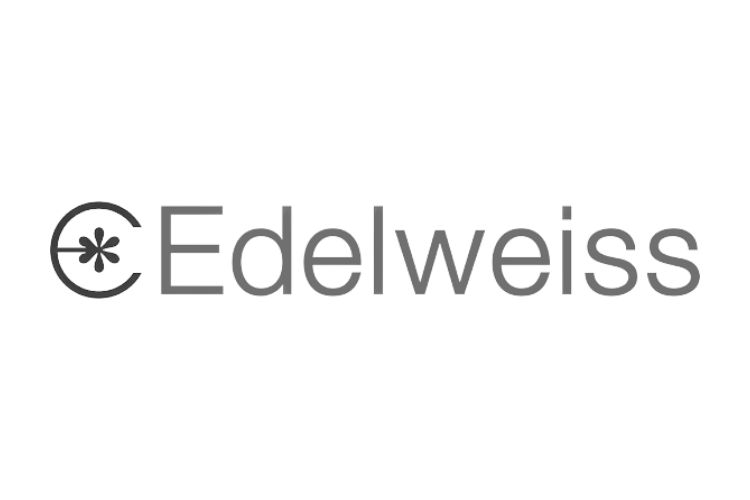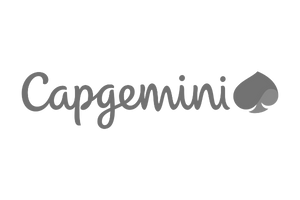More Aligned
Organisations
More Aligned
Goals

Drive your strategic agenda consciously. Create more alignment with common goals & objectives.
Vision, Mission & Values create better aligned organisations.
Ever-changing goal posts, conflicting priorities and agendas of employees can easily steer your organisation away from achieving its objectives. Therefore, it is critical for a company to have a clear vision, mission and supporting values.
- Inspire your employees.
- Drive organisational growth.
- Get clarity on organisational purpose.
Vision Mission Values Workshop
Leverage our years of experience and expertise in helping you craft the right Vision-Mission-Values for your organisation.
Vision
Create an inspirational statement that guides the ideal state of your organisation.
Mission
Describe your organisation's purpose & its overall intention for its customers & stakeholders.
Values
List the core principles that guide and direct the organisation, its goals and its culture.
Strategy
Develop the right strategies that are aligned to your VMV.
Goals
Formulate goals and objectives that are in line with your VMV.
Alignment
Align your goals and people to the VMV of your organisation.
Integration
Communicate your VMV, strategy and goals across the organisation.
Interested in a Vision, Mission & Values Workshop?
Define and communicate your vision, mission, values and purpose – leverage our expertise.

What is a Vision Statement?
A vision statement is an inspirational statement of an idealistic emotional future of a company or group. It is meant to portray intentions that are broad, all inclusive and forward thinking. The most powerful vision statements are those that inspire by asking for the best, the most or the greatest. Vision describes the basic human emotion that a founder intends to be experienced by the people within and outside of the organisation.
What are the characteristics of a Vision Statement?
- About tomorrow
- Aspirational
- Hopes & dreams
- What problems are we solving?
- What change do we want to bring?
What are the criteria for a Vision Statement?
- Future oriented
- Fits the organisation culture
- Sets standards of excellence
- Clarifies purpose and direction
- Inspires enthusiasm and commitment
What is a Mission Statement?
A vision becomes more tangible when expressed as a Mission Statement. A mission statement provides the necessary direction and NorthStar goals to lead the organisation. It defines these goals in terms of what the company does for its customers, employees and owners (stakeholders/shareholders). Mission statements serve to identify what is unique about the organisation.
What are the characteristics of a Mission Statement?
- About today
- Supports the vision
- Serves to communicate purpose and direction
- What we do for our customers, employees & stakeholders
What are the criteria for a Mission Statement?
- Present-oriented
- Core of your business/team
- What we do?
- Who we serve & how we choose to serve them?
What are Organisational Values?
Organisational values are a set of core ethics or beliefs in which the organisation is emotionally invested. They act as a guide to help the organisation set its code of conduct and a positive work culture. Organizational values are a set of norms that serve as a foundation and a blueprint by which employees and leaders address goals & priorities, problems and conflicts.
What are the characteristics of Organisational Values?
- Values create a personal connect
- Guide employee actions
- Help in choosing organisational strategy & goals
- Help during decision making dilemmas
What are the criteria for Organisational
Values?
- Clearly defined statements
- Should be specific and measurable
- No more than 3 to 5
- Cover all facets of business
What are the benefits of Vision, Mission & Values?
Vision, Mission & Values serve as the foundation for an organisation’s strategy. They provide a focal point that helps to align everyone with the organization, thus ensuring that everyone is working towards a single purpose.
- Provide the desired working environment for employees
- Communicate the standards of excellence for an organisation
- Attract the right customers and talent
- Align with the overall purpose of the company
- Provide direction during strategy planning & execution
What is a Purpose Statement?
Companies often describe their raison d’être through a purpose statement. A purpose statement helps clarify its reason for existence which is beneficial to both customers and employees. A purpose statement simply clarifies why your organisation is doing what it’s doing. A purpose statement serves to boost employee morale & customer loyalty and provide impetus to organisational goals.
- Communicate the reason why it exists
- Provide impetus to its Vision, Mission & Values
- Focused more on the outside world (consumers or society)
- Clarifies strategic priorities
- Helps choose the businesses an organisational won't do
What's the difference between a Purpose Statement & Vision Statement?
Purpose Statement
- Communicate the reason why it exists
- Provide impetus to its Vision, Mission & Values
- Focused more on the outside world (consumers or society)
- Clarifies strategic priorities
- Helps choose the businesses an organisational won't do
Vision Statement
- About tomorrow
- Aspirational
- Hopes & dreams
- What problems are we solving?
- What change do we want to bring?
What's the difference between a Vision Statement & Mission Statement?
Vision Statement
- About tomorrow
- Aspirational
- Hopes & dreams
- What problems are we solving?
- What change do we want to bring?
Mission Statement
- Present-oriented
- Core of your business/team
- What we do?
- Who we serve?
- How we choose to serve them?
Purpose, Vision, Mission & Values
Purpose
- Communicate the reason why it exists
- Provide impetus to its Vision, Mission & Values
- Focused more on the outside world (consumers or society)
- Clarifies strategic priorities
- Helps choose the businesses an organisational won't do
Vision
- About tomorrow
- Aspirational
- Hopes & dreams
- What problems are we solving?
- What change do we want to bring?
Mission
- Present-oriented
- Core of your business/team
- What we do?
- Who we serve?
- How we choose to serve them?
Values
- Provide the desired working environment for employees
- Communicate the standards of excellence for an organisation
- Attract the right customers and talent
- Align with the overall purpose of the company
- Provide direction during strategy planning & execution
How do you write Purpose, Vision, Mission and Values statements?
Choose a team: Invite core members of the organisational leadership team to participate in the process. If your culture is egalitarian and participative, you may also invite representatives from various teams within the organisation.
Define Purpose first: Ask the team to brainstorm on your organisation’s purpose first. Your company’s purpose statement would serve as an anchor to the overall business vision, mission and values.
Define Values next: This can be a trickier exercise. Defining values can be done using value cards. Diving deeper into universal values like Utilitarian, Theoretical, Aesthetic, Social, Traditional and Power would provide as a useful backdrop to brainstorm on.
Craft your Vision: If your purpose is achieved, what will the world look because of your purpose. The visioning exercise can happen through brainstorming (divergent thinking) and then narrowing it down to the right statement (convergent thinking). Be prepared for some wordsmithing at this stage.
Craft your Mission Statement: Your Mission is the work you will undertake every day to ensure it serves the purpose and vision in more tangible terms. To create your mission statement use the backdrop of your purpose, values and vision. It serves well to create themes first centering on your customers, employees and shareholders.
Sleep over it: Epiphanies do take time. Give it a week or two, reconvene and refine your Purpose, Vision, Mission and Values with the same team. Lightbulb moments always work in retro-modes.
Seek feedback: Share your statements with employees and important stakeholders within your organisation. Seek feedback and further refine your Purpose, Vision, Mission and Values statements.
Publish, communicate and embed: This is where the real work lies. Many organisations create powerful Purpose, Vision, Mission and Values statements. However, it has to serve the objective it was made with. Make sure you are relentless about communicating your Purpose, Vision, Mission and Values to existing and new employees. Ensure that you embed them into your structure, systems and policies. That’s when your Purpose, Vision, Mission and Values statements will come to life.
Interested in a Vision, Mission & Values Workshop?
Define and communicate your vision, mission, values and purpose – leverage our expertise.

Our Blog
Boosting Team Efficiency with DISC Profiles
Learn how to boost team efficiency with DISC Profiles. The DISC Team Profile offers you all you need to enhance your team's productivity.
Harnessing DISC Assessments for Enhanced Team Collaboration
Learn how to harness DISC assessments to enhance team collaboration with Synergogy's world class DISC based team building workshops.
What is BEI?
Our comprehensive guide unravels the nuances of BEI, from its foundational concepts to its practical application providing invaluable insights for HR professionals.
The Manager’s Guide to Mastering BEI Techniques
Discover the essentials of Behavioral Event Interviewing (BEI) in this in-depth guide, tailored for managers and HR professionals. Learn about crafting questions, integrating technology, and best practices to enhance talent acquisition and make informed hiring decisions.
Competency-Based Interviewing: An In-Depth Exploration into BEI
Dive into Behavioral Event Interviewing (BEI) and transform your hiring strategy. This guide introduces the essentials of crafting effective BEI questions and evaluating candidate responses, seamlessly integrating these methods into your talent acquisition process.
7 Proven Strategies for Managing Difficult Customers with DISC: Transforming Tensions into Triumph
Gaining insight into both personal and customer behaviours and preferences can be invaluable for customer service professional striving to provide exceptional service to challenging customers.
Building a Successful Succession Plan: A Step-by-Step Guide
Succession planning is a strategic process aimed at identifying and developing potential leaders within an organization who can replace key leaders when they leave, retire, or are unable to perform their duties. It involves nurturing high-potential employees for advancement, ensuring business continuity, and promoting a culture of talent development.
A Comprehensive Guide to Competency Mapping
Competency mapping is a strategic HR process used to identify and analyze the knowledge, skills, and behaviors needed to perform tasks efficiently and effectively within an organization. It aids in understanding the capabilities of current employees, thus facilitating informed decisions on recruitment, training, and performance evaluation.
The Comprehensive Guide to Creating Mission, Vision, and Values Statements
Crafting mission, vision, and values statements is an integral aspect of an organization's strategic planning process. These declarations provide a roadmap guiding the organization's decisions and actions, while also instilling a sense of purpose among its stakeholders
The Ultimate Guide to Organizational Development
Organizational development is a meticulously planned strategy. It cultivates growth and change within organizations, fostering the enhancement of organizational effectiveness and employee […]
Stepping Up: A Comprehensive Guide for First-Time Managers
The transition from a specialist or an individual contributor to the role of a manager is often filled with a mixture of excitement and apprehension. For many, it is the first step into the realm of leadership, offering a broader perspective of the organization and presenting an entirely new set of responsibilities. This voyage from being an individual player to becoming a first-time manager is as thrilling as it is profound.
Navigating Conflict: A Comprehensive Guide to Conflict Management
"Conflict is the gadfly of thought," so proclaimed the esteemed philosopher, Socrates. It stings and nudges us out of our complacency and comfort zones. In today's dynamic organizations, his wisdom resonates more than eve
Implementing a Mentorship Program: Ultimate Guide
A mentorship program can have a profound impact on organizations, promoting professional growth, fostering stronger relationships, and boosting employee satisfaction. This comprehensive guide offers a practical roadmap for organizations to establish and implement a successful mentorship program.
Job Evaluation Using Point Factor
Navigate through the realm of job evaluation by delving into the effective Point Factor Method. Discover how this method revolutionizes workplace productivity and enhances human resource management.
India’s Premier Design Thinking Certification Program – CDTP™
In a world consistently propelled by digital innovation, the realm of Design Thinking is becoming increasingly prominent. The torchbearer in this transformative journey, particularly in India, is the Synergogy Design Thinking Certification program. More than just an educational platform, Synergogy offers an unrivalled roadmap to a prosperous and burgeoning professional future.
Mastering Certified Competency-Based Interviewing Skills
In today's competitive job market, having strong interviewing skills is crucial for both job seekers and employers. To effectively assess candidates and make informed hiring decisions, organizations are increasingly adopting competency-based interviewing techniques. In this comprehensive guide, we will delve into the realm of certified competency-based interviewing skills, providing valuable insights, strategies, and tips to help you master this approach and excel in your hiring process.
Introduction to Interviewing Skills Training Certification
In the ever-evolving landscape of the modern workplace, companies need to adapt swiftly to keep up with the changing times. The traditional method of evaluating candidates based solely on their resumes and qualifications is no longer sufficient. It is the interviewing skills that hold the key to unlocking a candidate's true potential.
Mastering the Art of Interviewing Skills: A Comprehensive Guide
Whether you're looking to be the next Sherlock of recruitment or the Usain Bolt of job candidates, you've come to the right place. Strap yourself in and get ready for a whirlwind ride through the world of interviews, a dimension where everything you say or don't say can change your destiny.
Mastering CEO Succession Planning
In the fast-paced corporate world, CEO succession planning is not just a strategy, it's a necessity. The role of a CEO is pivotal in steering the organization towards success. However, the inevitability of change means that companies must be prepared for the day when their current leader steps down. This is where CEO succession planning comes into play. It ensures that there is a seamless transition of leadership, safeguarding the company’s vision, and maintaining its growth trajectory.
5 Simple Steps to Effective Problem Solving
The ability to solve problems is a crucial skill in the modern workplace. It can make the difference between success and failure, […]
Paving Your Path as a First-Time Manager: A Definitive Guide
Stepping into the world of management for the first time can often feel like venturing into a jungle without a compass. It’s a daunting landscape filled with challenges, expectations, and a new lexicon of ‘manager-speak’. But fear not! Here’s our comprehensive guide, sprinkled with a little wisdom from seasoned managers and some hard-learned lessons, to help you navigate your journey with confidence.
6 Leaders Share Their Insights on Diversity, Equity, and Inclusion
In this article, we interview six leaders from various industries to hear their thoughts on how to create a more inclusive workplace […]
How to develop an agile culture for startups?
The new role of Learning & Development in the post-pandemic era. COVID-19 has forced companies to re-image how L&D should function.
5 Mistakes to avoid while hiring internationally
The new role of Learning & Development in the post-pandemic era. COVID-19 has forced companies to re-image how L&D should function.
Creating a blueprint for organizational mental health
The new role of Learning & Development in the post-pandemic era. COVID-19 has forced companies to re-image how L&D should function.
BEI Certification Program
The Certified BEI Practitioner (C-BeiP)™ accreditation is a 8-hour BEI Certification Program. This interviewing skills certification program is endorsed by Human Resource Certification Institute (HRCI) for 8 Hours of continuing education units.
A Retro Look at Learning & Development: Preparing for the Future
The new role of Learning & Development in the post-pandemic era. COVID-19 has forced companies to re-image how L&D should function.
Self Regulation
Building your emotional intelligence by improving self regulation is one of the most difficult part of improving your Emotional Quotient.
Online DISC Certification – New Zealand
Master DISC application! Learn from the company that first computerised DISC in 1984.
Online DISC Certification – Melbourne
Master DISC application! Learn from the company that first computerised DISC in 1984.
Online DISC Certification – Brisbane
Master DISC application! Learn from the company that first computerised DISC in 1984.
Online DISC Certification – Sydney
Master DISC application! Learn from the company that first computerised DISC in 1984.












